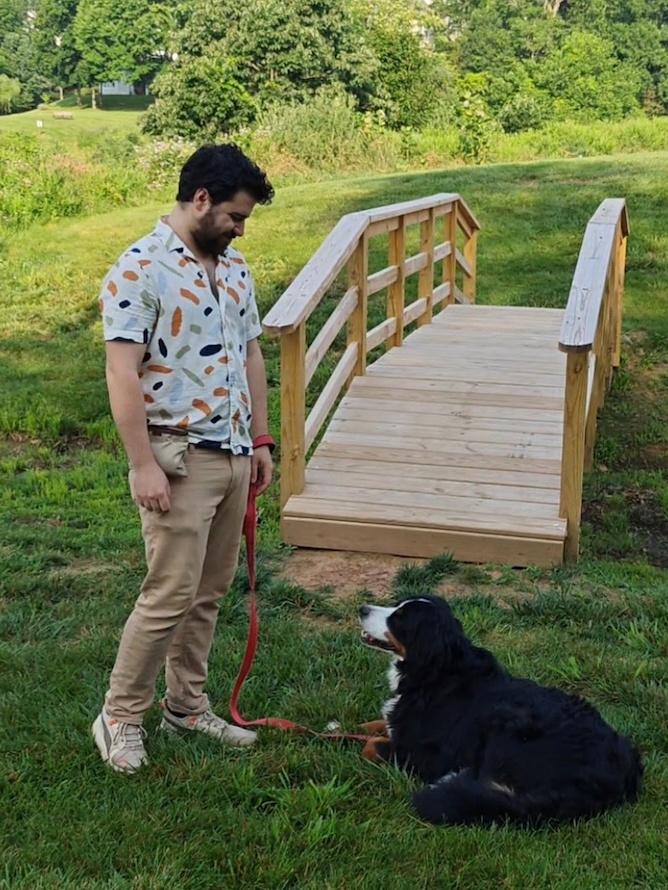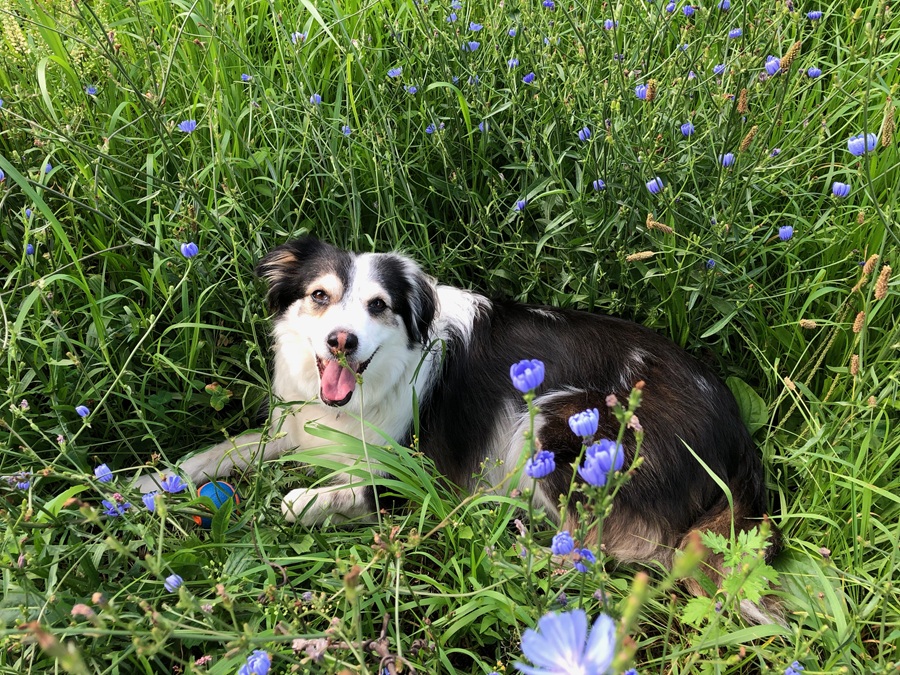Adam Piñero is fluent in the language of dogs. “Most people are familiar with the classics,” he says. “A wagging tail usually means happy. A tucked tail usually means scared.” But there’s much more to it than that, he says. In 15 years as a professional dog trainer, Piñero has mastered many subtleties of canine communication.
But when he comes to the Truro Public Library on July 18, Piñero plans to talk only with humans. No need to bring your dog.
Piñero was an Army brat, he says, but he grew up mostly in New York City, where he still lives; he spends summers in Truro. He works as a dog trainer in both places. Even though he’s a “dog person,” he says, he doesn’t have a dog of his own. “I get enough dog in my everyday life.” Instead, he has a cat named Honey.

Piñero first learned to train dogs during his last two years of high school, when he boarded at the now-closed Family Foundation School in Hancock, N.Y. There, he participated in a program called “dog corps,” which involved an internship with Eagle Valley Search Dogs, a search and rescue team.
“Before I was allowed to train dogs,” Piñero says, “I had to train a fish to jump through a hoop, train a chicken to walk over a seesaw, and train a human without him finding out.” For the guppy and the chicken, Piñero used a laser pointer and positive reinforcement — otherwise known as treats — to achieve his goals.
Positive reinforcement also works with humans, he found. “I’d come into class unprepared and ask for a piece of paper,” he says. When he got it, he says, he’d offer a piece of candy. He knew he’d succeeded the day he sat down and was instantly handed a piece of paper without having to ask. Since then, Piñero has worked with police dogs, bomb- and drug-detection dogs, competition obedience dogs, and regular pets.
In his work as a pet trainer, “all of my job is working with people,” Piñero says, though he feels it’s a cliché to say he’s a “human trainer.” He’s teaching dog owners a skill, he says, “to communicate with their dogs and listen to what their dogs are communicating to them.”
When dogs talk, it’s “80 percent body language,” Piñero says. “The barks are just emphasis.”
That body language has three parts, he says: tail, ears, and posture. “From the tail, you get a broad sense of the dog’s emotions,” Piñero says. “From the ears, you understand what’s on their minds, what they’re paying attention to. The posture fills in all the gaps.”
To become fluent, one must tune into nuance. A wagging tail can have different meanings. There’s a “high and tight wag,” Piñero says, which generally indicates discomfort, guardedness, and wariness. A “low and loose wag,” he says, is the classic happy greeting.
Facial expressions are even more nuanced and easily misinterpreted. “A dog baring its teeth can be scary,” he says. “But if it’s happening in the dog park, they’re often just playing.” Before looking at the dog’s face, observe its body language: stiffness, looseness, raised or smooth hackles, low or tall posture.
A dog’s mental health and history can factor into how it communicates, Piñero says. An anxious rescue dog will often simultaneously display stress signals (showing the whites of its eyes, panting, pacing) and self-soothing actions (like yawning, lip-licking, and shaking off).

Different breeds have certain quirks. “A Rottweiler has a happy growl,” Piñero says. “That’s how the dog expresses its feelings in its own dialect.” But despite this unusual vocal habit, it’s unlikely that, for example, a Rottweiler happy-growling next to a Labrador retriever would result in a miscommunication. “The vocalization is so minor,” Piñero says. “The Lab is instead watching the other dog’s body posture.”
Reading body language is no mystery to humans, Piñero says. “We’re communicating constantly that way, even if we don’t consciously recognize it.”
There are many misconceptions about the way dogs communicate, Piñero says. One myth he likes to try to debunk is that of the “alpha dog.” American biologist David Mech first introduced the idea of the “alpha” — a strong, aggressive pack leader — in his 1970 book The Wolf: The Ecology and Behavior of an Endangered Species.
Then, in a 1999 paper published in the Canadian Journal of Zoology, Mech refuted his previous claim, writing that wild wolves don’t fight for power; instead, they form families. Pack leaders, or “alpha wolves,” are the parents of a tight-knit family unit. It was too late. The term has now gone “mega viral” in popular culture, says Piñero. “Manosphere” podcasters often use the term “alpha male” to validate their opinions on social hierarchies.
The podcasters couldn’t be more wrong about their idea of aggressiveness being a prerequisite for power — at least not when it comes to dogs. Piñero recalls the time one of his mentors, dog trainer Jennifer Gambino, had a pack of 13 dogs. Ten of them were trained search-and-rescue dogs — large, high-strung, intelligent, but emotionally unstable breeds like German shepherds and Belgian Malinois. “The leader of her pack,” says Piñero, “was a calm, two-foot-high Rottweiler-Corgi mix named Anna. Packs are not led by the toughest or meanest. They’re led by the best communicator.”
In a relationship between human and dog, Piñero says, the dog should see its person as someone willing to listen and understand. That’s what makes a good leader, and “that’s who the dog will choose to follow,” he says.
Be Bilingual
The event: Learn to speak dog with Adam Piñero
The time: Friday, July 18, 10:30 a.m.
The place: Truro Public Library, 7 Standish Way
The cost: Free



